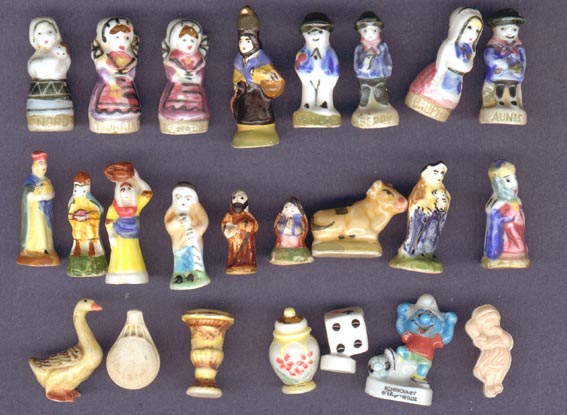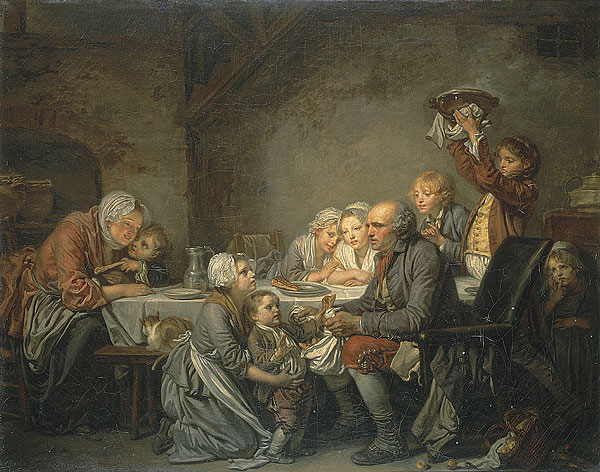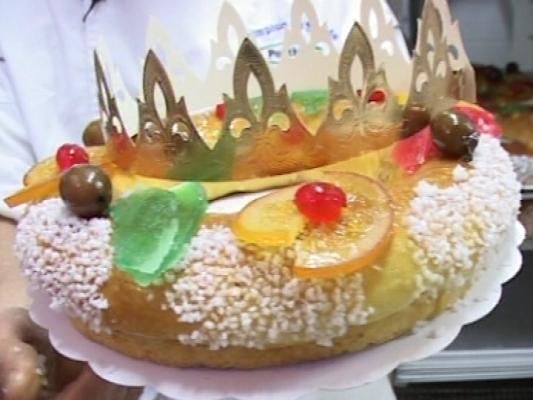Bonne Année! Happy New Year!

I first ate Galette des Rois in Paris, on a cold, rainy January day. The smell of the almond-paste filling seemed to reach right out through the door of the nameless little patisserie near the Rue Monge and grab me by the lapels of my too-thin coat. I couldn’t wait to get back to my hotel room, and so I didn’t. With the first bite, just outside the door, to the shock of the French women standing under the awning, the cold day seemed to vanish. All that counted, in spite of the stares and all, was the tremendous power of food to provide warmth and happiness.
La galette des rois, or King Cake, shows up for New Year’s, in France, and in many places where French culture prevails. In fact, it’s readily available throughout January in patisseries from Saigon to Paris and Fort-de-France (Martinique).

Much history envelops this cake and the practices that surround the eating and serving of it and its associations with Epiphany (January 6). The following barely plumbs the icing or the crust …
Regardless of the type (galette or gateau), the cake invariably contains a fève, or small gift, which bestows upon the person biting into it various rewards and responsibilities for the coming year. (Except for the cake presented to the president of France!) The fève in the past was, well, a real fève, or dried fava bean, although legend has it that the original was a ring lost in some dough. Who knows, though it could very possible. (Think of how many times you’ve kneaded dough and thought, “Oh, I’d better take off that ring.”) The tradition of the King Cake likely started began in thirteenth-century France when a cake/bread was baked on the first Sunday of each New Year. This ostensibly was meant to celebrate the Three Kings and their journey to the Christ Child. In France, the sentiment is that the galette “draws” (tirer) the Three Kings to the Child. In the north of France it is more of a feuilleté or puff pastry similar to pithiviers, while in the south it’s like brioche or bread and called a Gateau des Rois. And, of course, as you can imagine, the very first of these “cakes” tended to be heavy and dense.
Tradition requires that the cake to be cut into as many pieces as there are people present, plus one, called “part du Bon Dieu” (God’s slice), the “part de la Vierge” (the Virgin Mary’s slice), or the “part du pauvre” (poor man’s slice).
Like many traditions, making (and eating) the Galette des Rois likely traces its roots back to the pagan past and the concept of sacrifice and the ensuing human- and animal-shaped breads and doughs that still form part of winter holiday celebrations.

The brioche variation of Galette des Rois, called Gateau des Rois:

And below you see how closely the New Orleans Mardi Gras King Cake looks in comparison to the French version of Gateau des Rois:

Want to make your own?
Here’s how French food blogger Clotilde Dusoulier made hers: Click HERE. (Recipe is in English.)
© 2011 C. Bertelsen
Yes, the galettes/gateaux are associated with January 6, but also with New Year’s now, too. Happy New Year to you!
When I was in France taking care of the French children we had a gateau des rois but I think it was on 6 January. I’d never been part of the celebration before and with the children it was a lot of fun. Thanks for reminding me, and teaching me about it. Happy New Year.
Louise, so good to “see” you. I also see that your blog is up and running again! Yes! Have a wonderful day cooking today, OK?
What a glorious post, Cynthia. Thank you so much for sharing…
A very Happy New Year to You and Yours!!!